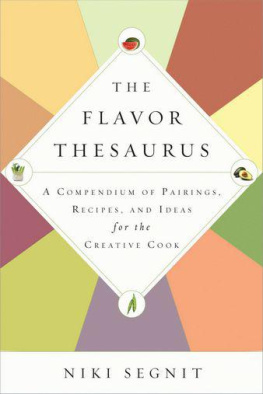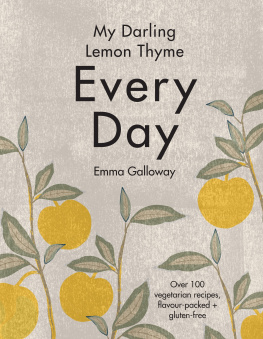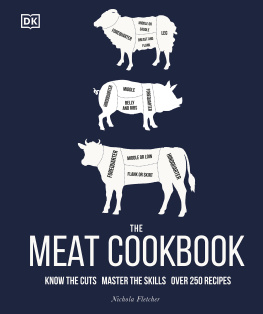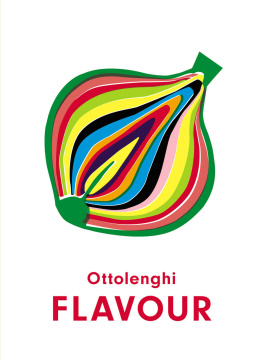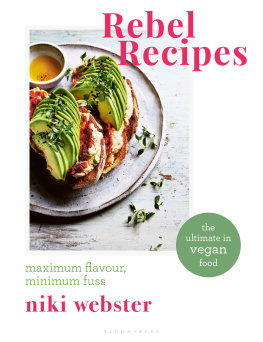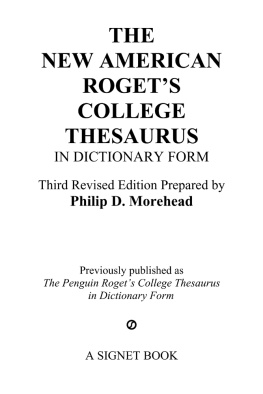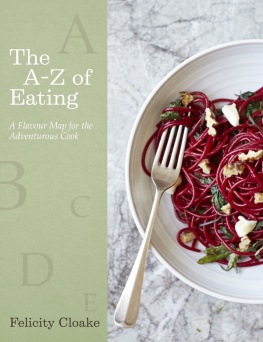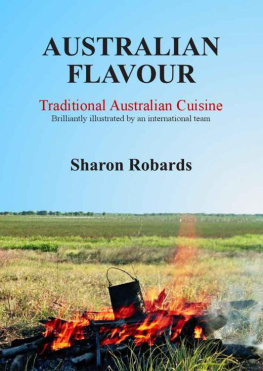

The Flavor Thesaurus
A Compendium of Pairings, Recipes and Ideas for the Creative Cook
Niki Segnit

It seems fitting to dedicate this book to a pair:
my cooking adviser and mother, Marian Stevens,
and my writing adviser and husband, Nat Segnit.
Contents
... lamb and apricots are one of those combinations which exist together in a relation that is not just complementary but that seems to partake of a higher order of inevitabilitya taste which exists in the mind of God. These combinations have the quality of a logical discovery: bacon and eggs, rice and soy sauce, Sauternes and foie gras , white truffles and pasta, steak-frites , strawberries and cream, lamb and garlic, Armagnac and prunes, port and Stilton, fish soup and rouille , chicken and mushrooms; to the committed explorer of the senses, the first experience of any of them will have an impact comparable with an astronomers discovery of a new planet.
John Lanchester, The Debt to Pleasure
I hadnt realized the depth of my dependence on cookbooks until I noticed that my copy of Elizabeth Davids French Provincial Cooking had fingernail marks running below the recipes. Here was stark evidence of my timidity, an insistence on clinging to a set of instructions, like a handrail in the dark, when after twenty years of cooking I should surely have been well enough versed in the basics to let go and trust my instincts. Had I ever really learned to cook? Or was I just reasonably adept at following instructions? My mother, like her mother before her, is an excellent cook but owns only two recipe books and a scrapbook of clippings, and rarely consults even those. I began to suspect that the dozens of books I owned were both a symptom and a cause of my lack of kitchen confidence.
It was at a dinner around the same time that a friend served a dish using two ingredients it would never have occurred to me to pair. How, I wondered, did she know that would work? There was something in the air about surprising flavor matches, the kind of audacious combinations pioneered by chefs like Heston Blumenthal, Ferran Adri and Grant Achatz. What lay at the heart of their approach to food was, as far as I could see, a deeper understanding of the links between flavors. Being an ordinary, if slightly obsessive, home cook, I didnt have the equipment or resources to research these; what I needed was a manual, a primer to help me understand how and why one flavor might go with another, their points in common and their differences. Something like a thesaurus of flavors. But no such book existed and so, with what turned out in hindsight to be almost touching naivete, I thought I might try to compile one myself.
My first task was to draw up the list of flavors. Stopping at 99 was to some extent arbitrary. Nonetheless, a flavor thesaurus that accounted for every single flavor would be as impractical as it would be uncomfortable on the lap. Other than potatoes, the staple carbohydrates have been omitted. The same goes for most common condiments. There are, of course, plenty of interesting things to say about the flavors of rice, pasta, black pepper, vinegar and salt, but their flavor affinities are so wide as to exclude themselves by virtue of sheer compatibility. Other omissions, like zucchini, might strike you as odd: all I can say to the zucchini fan is (a) sorry, and (b) this book makes no claims to be the last word on the subject. Any book on flavor is going to be at least in part subjective, and in writing about the pairings I find most interesting or like to eat the most, I will inevitably have left gaps that come down to nothing other than a matter of taste.
The majority of flavors appear under their own heading. In a few instances, where it seemed to make sense, some very similarly flavored ingredients share a heading. Anise, for example, covers anise seeds, fennel, tarragon, licorice and pastis. Similarly, neither bacon and ham nor Brussels sprouts and cabbage could easily be separated, so they labor slightly uncomfortably under composite categories. When it came to a choice between untidiness and boring the reader with repetitions, I chose untidiness every time.
Then I sorted the flavors into categories. Most of us are familiar with the concept of flavor families, whether we know it or not. Floral, citrus, herbaceous: the sort of descriptors you might encounter on the back of a wine bottle, to help conjure an idea of how something might taste. And its into these, or adjectival headings like them, that the flavors are divided. The flavors in each family have certain qualities in common; in turn, each family is linked in some way to the one adjacent to it, so that, in sum, they comprise a sort of 360 spectrum, represented opposite as a flavor wheel.
Take the Citrusy family, for example. This covers zesty, citric flavors like orange, lemon and cardamom. Cardamom, in turn, has flavor compounds in common with rosemary, which is the first flavor in the next flavor family, Berry & Bush. At the other end of that family, blackberry leads to the first flavor in the Floral Fruity family: raspberry. And so on around the wheel, flavor leading to flavor, family to family, in a developing sequence of relations you might enter at lemon and leave at blue cheese.
I acknowledge that this methodology has its limitations. Some flavors resisted easy categorization: coriander seed, for instance, ended up under Floral Fruity, but might as easily have sat in Citrusy or Spicy. And how an ingredient is prepared can make all the difference to its character. The flavor of cabbage, for example, is mustardy when raw, sulfurous cooked. The flavor wheel, in short, is by no means intended to be an inarguable, objective framework for understanding flavorbut it does provide a stimulating and intriguing means of navigating your way around the subject.
Next came the pairings. Clearly, dishes often have more than two primary ingredients, but a couple of considerations led me to make pairs of flavors the organizing principle of my Flavor Thesaurus . First, sanity (mine). Even restricting myself to 99 flavors, if I had set out to write about flavor trios I would have been faced with 156,849 possible combinations; the 4,851 possible pairings seemed more to scale with the sort of book it would be both possible to write and pleasurable to read. Second, clarity. To assess, in the minds palate, the compatibility of two flavors is exponentially easier than imagining the interplay of three or more. Necessarily, I often discuss a flavor combination in the context of a dish that contains other ingredients (for example, parsley and mint in tabbouleh), but the emphasis is always on the main flavor pairing under discussion.
The entries elaborate on each of these pairings, drawing promiscuously on flavor science, history, culture, chefs wisdom and personal prejudiceanything that might shed light on why certain flavors work together, what they bring out in each other, how the same flavor pairings are expressed in different cuisines and so on. Ive given any recipes in the briefest possible terms, rather in the manner of Victorian cookbookscompressed in the expectation that you have some experience in the kitchen. If youre tempted to cook anything in the pages that follow, its best to read the recipe through before you start (see Beet & Pork, page 75, if you need convincing). Ive assumed you know that you usually need to add salt to savory dishes, taste them and adjust before you serve, turn off the stove when youre finished, and fish out any ingredients that might choke your loved ones. If something in a recipe isnt clearstop, think, and if the solution still isnt forthcoming, find a similar recipe and see if that sheds any light.
Next page
